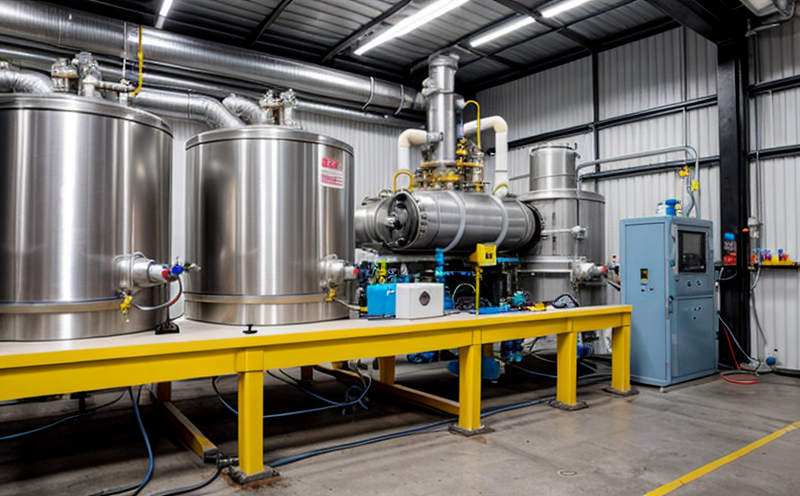Neutron Activation & Flux Testing
The process of Neutron Activation Analysis (NAA) and Flux Testing is a cornerstone in the field of radiation and nuclear testing. This technique involves exposing materials to high-intensity neutron flux, which causes the introduction of radioactive isotopes into the material being tested. These isotopes emit characteristic gamma rays that can be measured by detectors to determine the elemental composition of the sample.
This method is particularly useful for non-destructive analysis, allowing for precise quantification of trace elements within complex materials without altering their physical properties. The technique finds applications in a wide range of industries including nuclear fuel cycle facilities, environmental monitoring, and material science research. It is especially valuable where high sensitivity and accuracy are required.
The testing process typically involves several key steps: first, the sample is prepared according to strict protocols that ensure optimal exposure conditions. This preparation often includes grinding or slicing to achieve a homogenous surface for neutron interaction. Once prepared, the samples are exposed to an intense neutron flux generated by reactors or accelerators. The duration of this exposure varies depending on the specific elements being analyzed.
Following exposure, the samples are allowed to decay naturally until their radioactivity is at a safe level. This is followed by gamma spectroscopy analysis using high-purity germanium detectors or similar instruments capable of detecting low-energy photons with high precision. The data collected provides detailed elemental composition information which can then be used for quality assurance, process control, and research purposes.
The accuracy and reliability of NAA depend heavily on the neutron flux uniformity and stability, as well as the purity of the detectors used in gamma spectroscopy. International standards such as ISO 16952 provide guidelines for best practices in this area. Compliance with these standards ensures consistent results across different laboratories.
Given its precision and capability to identify minute amounts of elements, NAA has become an essential tool in various sectors including nuclear fuel production, environmental monitoring, and forensic science. Its ability to detect trace contaminants in materials like metals or polymers makes it invaluable for ensuring product safety and compliance with regulatory requirements.
International Acceptance and Recognition
The International Organization for Standardization (ISO) has recognized NAA as a reliable method for elemental analysis, ensuring its acceptance in many countries worldwide.
ASTM standards provide additional validation for the application of NAA techniques in specific industries like metals and alloys.
The European Committee for Standardization (CEN) also acknowledges NAA through various technical specifications that guide its implementation in Europe.
In Japan, the JIS standardizes NAA procedures to ensure uniformity across laboratories performing these analyses.
Furthermore, NAA is recognized by regulatory bodies like the Nuclear Regulatory Commission (NRC) and European Atomic Energy Community (EURATOM).
Use Cases and Application Examples
| Application Area | Description |
|---|---|
| Nuclear Fuel Production | Evaluating the purity of fuel pellets, detecting impurities that could affect reactor performance. |
| Environmental Monitoring | Detecting trace elements in soil and water samples to assess pollution levels. |
| Material Science Research | Investigating the elemental composition of newly developed materials for improved properties. |
| Forensic Analysis | Identifying unknown substances or verifying the authenticity of artifacts. |
| Medical Isotope Production | Ensuring the quality and purity of isotopes used in medical treatments. |
Environmental and Sustainability Contributions
The use of Neutron Activation Analysis contributes positively to environmental sustainability by providing accurate data that enables better decision-making processes. For instance, it helps identify pollutants more precisely, leading to targeted remediation efforts. In the nuclear fuel cycle, ensuring high-quality materials reduces waste and enhances reactor efficiency, thereby conserving resources and minimizing carbon footprints.
Moreover, NAA contributes significantly to sustainable development goals by supporting industries that rely on precise elemental analysis for their products' safety and reliability. This ensures compliance with environmental regulations while promoting innovation in material science and technology.





